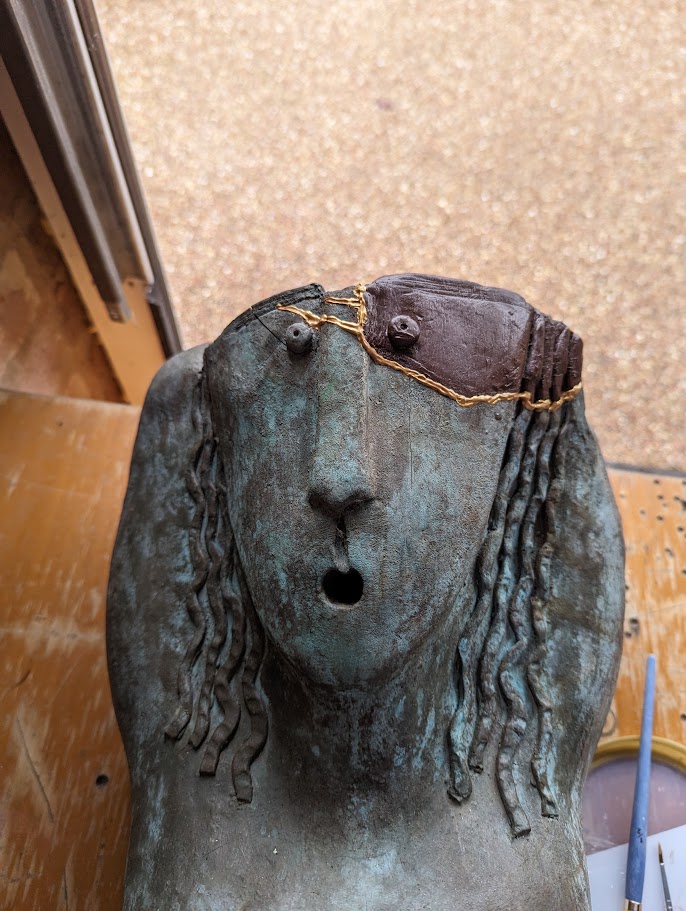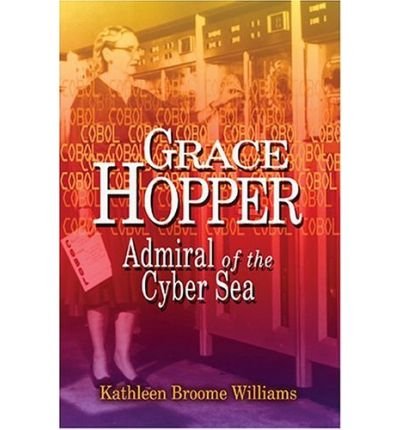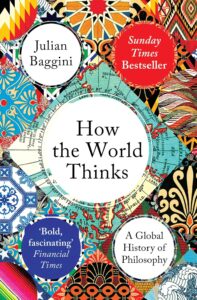Author's posts
Jan 08 2024
Book review: Her Space, Her Time by Shohini Ghose
My next review is of Her Space, Her Time by Shohini Ghose. I picked this book up as a result of a review in New Scientist. It is in the spirit of Broad Band which covered the contributions of women to computing over the years – contributions which have historically been ignored. Her Space, Her Time does the same for women in physics, generally on the astrophysics and cosmology side of the subject.
The book is divided into seven chapters each covering an area of physics and a group of women who worked in those areas. The chapters cover star cataloguing (and rather more), the big bang, the space programme, radioactivity, nuclear fission, particle physics and dark matter/ beta decay. This results in a coverage which is approximately chronological.
There are some recurring themes in the book: women not allowed entry to universities for undergraduate and graduate studies, women not allowed employment in university departments and facilities (often the pretext is the lack of toilets for women), women not allowed employment at the same institution as their spouse (this seemed common in the US and its effect on the recruitment and promotion of women was noted as far back as 1966), being ignored by the Nobel Prize committee and (sometimes) their male collaborators. These women were frequently the only women in the room. Fleeing Nazi Germany (and Austria) is a theme too but that applies equally to men.
On a more positive note their work was often recognised and rewarded during their lifetimes by their scientific communities. In at least the case of Ernest Rutherford and Ernest Lawrence they had the support of senior scientists throughout their lives.
The Harvard Observatory features heavily in the first couple of chapters. Women originally became involved as “computers” analysing the stars in the photographic plates. They included Williamina Fleming, Annie Jump Cannon, Antonia Maury and Cecilia Payne-Gaposchkin with Anna Draper providing funding to the observatory via a bequest in the late 19th century. In they first instance they were analysing stars for brightness and then later for spectral features. A group of women were responsible for compiling the “Harvard” stellar classification scheme which classifies stars by temperature using the letters O, B, A, F, G, K, M (typically remembered by a sexist mnemonic). One of the women, Henrietta Swan Leavitt, discovered the relationship between brightness and period for stars which is central to measuring intergalactic (and shorter distances) and was key to understanding the scale of the galaxy and the universe. Over a very long period Harvard Observatory allowed women to be employed as astronomers, and finally become professors in astronomy. The transitions usually being the result of a change in observatory or university management.
The third chapter is a bit of an oddity, looking at women’s contributions to the space programme on the project management and rocketry side of things rather than physics as such.
The final four chapters are then an extended collection on nuclear physics starting with Marie Skłodowska-Curie, and the less well known Harriet Brooks who worked on the new subject of radioactivity in the late 19th century. Brooks worked with Rutherford, publishing in 1904 in Nature on their discovery of radon. Rutherford and Frederick Soddy would earn the Nobel Prize for the transmutation of elements whilst Brooks was left out. Rutherford and Brooks clearly had a long personal relationship, ending in 1933 on her death at the age of 56. Brooks had left physics research in 1907 when she married Frank Pitcher.
Chapter 5 largely concerns Lise Meitner who was involved in the discovery of nuclear fission with Otto Hahn with whom she worked closely for many years. Hahn received the Nobel Prize for their work on nuclear fission, whilst she did not – this has been seen as one of the more egregious omissions of the Nobel Prize Committee – Meitner was nominated for a Nobel Prize 48 times and was widely recognised as an expert in her field. Her position was made more difficult because she was Jewish, worked in Austria and with Hahn who despite protestations was a Nazi sympathiser at the very least.
Chapter 6 concerns cosmic rays and the photographic detection thereof. It starts with Bibha Chowdhuri who is from Ghose’s home city of Kolkata and was later to discover cosmic ray muons using this method. The focus of the chapter though is Marietta Blau and her student Hertha Wambacher who developed the method of photographic detection of cosmic rays. The Meitner/Hahn story is reprised here with Jewish Blau forced to leave Vienna in 1938 with her student Wambacher, a Nazi sympathiser, remaining to take credit. Elisa Frota-Pessoa, a Brazilian physicist, is mentioned somewhat incidentally towards the end of the chapter with Ghose stumbling on one of her (very prescient) publications whilst researching other work.
The book finishes with the slightly odd pairing of Wu Chien Shiung who was instrumental in the discovery of parity violation which won her colleagues Tsung-Dao Lee and Chen-Ning Yang the 1957 Nobel Prize in Physics (they specifically mentioned her in their acceptance speech) and Vera Rubin who is credited with discovering dark matter by measuring the rotation curves of galaxies and observing that they flatten at large radii – an indicator of the presence of extra, unseen matter.
Reading back through my notes, women were at the heart of modern physics through the 20th century, often those women were the only ones in the room – it is clear they were exceedingly capable. The men around them collected a dozen Nobel Prizes whilst the only woman from this book to win the Nobel Prize for Physics was Marie Skłodowska-Curie. Maria Goeppert Mayer shared the Nobel Prize for Physics in 1963 she is the only other woman to win in the 20th century. She is not included in this book, perhaps because her Nobel Prize meant she was already well known.
In the past I thought the Nobel Prize committee were simply a bit careless in failing to award women but reading this book it seems they were rather purposeful – the physics community knew these women, and the significance of what they had done, and many were nominated for a Nobel Prize, often repeatedly.
As a result of this book I am now interested in a parallel volume of Indian scientists in the West!
Dec 31 2023
Review of the year: 2023
This year has been rather unusual as a result of redundancy, and long COVID.
I caught COVID in February 2022 and my fitness has been in steady decline since then – I used to be able to run 3x10km per week but through 2022 I struggled to work my way back to that level and in fact each time I made progress I was knocked back to a lower level until by September this year I stopped running. I have also missed out on holidays and family gatherings – knowing that an half an hour or so of mild exertion would leave me exhausted. In the spring of this year I approached my GP, and after a long series of tests which showed I was in otherwise excellent health I ended up in my local long COVID clinic in October.
The long COVID clinic has been really helpful – after an initial evaluation appointment (an hour long with two people!) I now have a monthly meeting with an occupational therapist whose main advice is not to do too much and rest. I’m currently stable but not doing much, looking forward to working my way back up very cautiously.
This summer, at the age of 53, for the first time in my life, I was made redundant. This was a rather stressful process, mitigated slightly by the fact that at the first hint of redundancy being on the cards (invitation to a meeting with line manager and a representative of HR) I made my “can I retire?” spreadsheet and that looked like a possibility! I am not retiring though. I wrote a “Leaving Address” blog post. After spending the summer lounging around doing not much except a little DIY, I then spent the Autumn doing little on the advice of the long COVID clinic.

Then I became employed by mistake*! My old boss from ScraperWiki got in touch asking if I was available because UNOCHA were looking for someone to do maternity cover. I worked on the establishment of the Humanitarian Data Exchange for UNOCHA nearly 10 years ago. The day after my first contact I spoke to someone I’d worked with 10 years ago, submitted my CV and filled in a form. I had a contract inside a week! I’m really enjoying the work. The end of year townhall meeting was a bit of an eye-opener – it included personal testimonies from people working in Türkiye (where there was an earthquake earlier this year), Yemen (war zone) and Gaza (also war zone).
I blogged about 18 books this year, including biographies of Richard Trevithick, John von Neumann, Margaret Cavendish, and Grace Hopper. If nothing else they highlighted just how exceptional and unusual people who warrant biographies are. The Grace Hopper biography was prompted by Broad Band by Claire L. Evans a book about women working in computing over the years since Ada Lovelace in the first half of the 19th century.
There have been a few books that fit under the diversity theme, in addition to Broad Band, On Savage Shores by Caroline Dodds Pennock – about native Americans in Europe from the 15th century, Femina by Janina Ramirez – about women in the medieval period and The First Astronomers by Duane Hamacher . The First Astronomers is about aboriginal astronomers from various parts of the world (although mainly Australia) – they are very astute observers, aware of phenomena only recognised in the West in the later 19th century. I also gained a better appreciation for oral traditions from this book, stories are not meant to be taken literally – they are mnemonics to pass on vast bodies of knowledge as accurately as possible. I think these books have had the biggest impact on how I think.
There was a thread of books on data visualisation too – starting with Storytelling with data by Cole Nussbaumer Knaflic continuing with Data Points by Nathan Yau, Resonate by Nancy Duarte and finishing with Storytelling with you by Cole Nussbaumer Knaflic. In other technical books I also read Masterminds of Programming by Federico Biancuzzi and Shane Warden – about the inventors of a number of programming languages, and The Mythical Man-month by Frederick Brooks Jr. The Mythical Man-month is a classic in software project management, written based on experiences in the late sixties it has the air of fifties era sci-fi, fantastically insightful in places but deeply anachronistic in others.
With time on my hands I also started a series of technical posts of my own, on the ecosystems for different programming environments – starting with Python and Typescript – this turned out to be quite revealing – Python is my “first” programming language at the moment but researching the Typescript ecosystem clarified my understanding of Python.
I read a couple of historical overviews, The Earth Transformed by Peter Frankopan, about the impact of the environment on human history and vice verse, and How the world thinks by Julian Baggini – this is a comparative history of philosophy. The Wood Age by Roland Ennos and Foreign Bodies: Pandemics, Vaccines and the Health of Nations by Simon Schama are difficult to classify. I must admit I struggled with Foreign Bodies, it featured incredibly long chapters, and the longest sentence I recall reading in English.
My son started high school, which went very well. There is a lot more preparation than there was when I was growing up, transition days, a couple of summer school days and a WhatsApp group! Mrs H is now Dr H – she graduated from her EdD in October.
Personally, I am hoping for a better 2024 with some recovery from long COVID and perhaps the continuation of the work I am doing with UNOCHA.
- Withnail and I reference :-)
Dec 08 2023
Book Review: Grace Hopper – Admiral of the Cyber Sea by Kathleen Broome Williams
After reading Broad Band by Claire L. Evans, about women in computing, I realised Grace Hopper was important, so I thought I’d hunt out a biography. I found Grace Hopper: Admiral of the Cyber Sea by Kathleen Broome Williams. Unusually I bought it second hand – my copy came from the Richard Stockton College of New Jersey Library Pomona, and has an austere, maroon cover.
Grace Hopper was born in New York City in 1906, she died in 1992. An undergraduate in mathematics she started a career in teaching at Vassar College but joined the Navy after the US joined the Second World War. She was posted to work on the Mark I computer at Harvard. She subsequently wrote the first software compiler, and was instrumental in the creation of the COBOL programming language. After “retiring” she then had a long career in the US Navy working on standardising their computing systems. After finally retiring from the Navy she worked for DEC for a few years until her death at the age of 86. She finished her career a rear admiral in the US Navy and has a battleship named for her (the USS Hopper) amongst numerous other rewards.
Grace Hopper gives some feel as to how it was to grow up in a relatively wealthy New York City family. The Hopper family had a holiday home in Wolfeboro, New Hampshire which, when she was small, was a day and a half travel to reach from New York City. She was brought up to be self-sufficient and trained in mathematics. Her father worked in insurance and was a double amputee – he wanted to make sure his children could fend for themselves should he die although he survived to a fair age.
Hopper studied mathematics first at Vasser College before going to Yale for a PhD in mathematics. She married Vincent Hopper in 1930, they bought a summer home of their own in Wolfeboro for $450 – part of a wedding gift. They were divorced in 1941 although it was not something she talked about, despite giving numerous interviews later in her live. Grace Hopper does not indicate the grounds for her divorce. After gaining her degree she became a lecturer in Vasser College where she was an excellent and committed teacher.
When America joined the war she was keen to serve in the US Navy which she achieved following some struggle. Fundamentally they were not keen to employ women, furthermore she was older than the Navy typically recruited, technically underweight and in a reserved occupation (as a lecturer in mathematics). Eventually she joined in 1942, and finally entered service in 1944, after training. She was proud to work in the Navy throughout her life and even whilst employed in industry she continued in the reserve service. In her Navy service she found a link with the dignitaries, including royalty, she met in later life.
Her naval placement was with the Mark I computer at Harvard, invented by Howard Aiken and built by IBM. It was the first programmable electromechanical computer in the world. Based on the slightly older relay technology rather than valves found in successors it was used principally for ballistic calculations as well as calculations of various function tables. Aiken was pretty tough to work with but Hopper clearly knew how to handle him and held him in high regard. She worked on many of the Mark I’s smaller programming jobs as well as doing more than her share of documentation and report writing.
One issue with the Mark I was that it was programmed with paper tape, the programs and data are stored as a pattern of holes 3-4mm across punched out the tape. There was a lot of paper around, as well as the disks of paper punched out from the tape. Sometimes one of the punched out disks was re-united with a hole causing an error, as Hopper pointed out “a hole getting back into a hole”!
After the war it was clear she would not be able to continue at Harvard, so she let to work on the UNIVAC at the Eckert–Mauchly Computer Corporation, later bought by the Rand Corporation and then IBM. Through Hopper’s life we see the birth and maturing of the new computing industry.
Hopper realised there was a need for standardisation in programming languages. There were an increasing number of different types of computer around, and the maintenance and programming of such computers was a bigger job than had initially been realised. Standardisation reduces this problem because a program written for one computer can be run on another. This is how COBOL was born, the Navy sponsored the Committee on Data Systems Languages (CODASYL) which created the COBOL programming language which was derived from Hopper’s FLOW-MATIC language developed for the UNIVAC.
As a scientist and software developer for 30 years I was scarcely aware of COBOL, yet it comprised approximately 80% of running code in the late nineties, according to Gartner. I imagine that figure has not dropped greatly. There is clearly a huge body of COBOL “dark matter” that software developers don’t talk about. The reason for COBOL’s obscurity seems to be the disdain of the academic computer science community, FORTRAN – born at the same time – suffers a similar disdain.
During her time working on UNIVAC Hopper maintained her Navy connection through a reserve position, and in 1966 – at the age of 60 – she retired from the reserve to work full time for the Navy at the Pentagon. She continued to work in the Navy until 1986 when she left to join DEC, at the age of 80!
In this book Grace Hopper comes out as an exceptional character. Her great skills were rooted in teaching, the drive to build a compiler was partly making her own life easier but also democratising the process of programming. She also saw the importance of raising a generation of programmers. She was very personable but seemed to have virtually no personal life. She drank moderately and smoked heavily for most of her life, and clearly had a bit of a hording problem towards the end. She was a life-long Republican and saw little value in the women’s rights movement – her own enormous success giving her the impression that there was no inequality to address.
Throughout her life, well into the period others might consider retiring, she was was engaged in a full schedule of public speaking. She gained many rewards, and a great deal of recognition in her lifetime.
I really enjoyed this book, the only place my interest lessened slightly was in the chapter describing administrative reorganisations of the US Navy. I am in awe of the achievements of Grace Hopper.
Nov 17 2023
Book review: How the world thinks by Julian Baggini
Whilst economising during a period without work I thought I would turn to other books in the house to read and review. This is how I came to How the World Thinks: A Global History of Philosophy by Julian Baggini. This is not to say I am uninterested in philosophy but, as a scientist in the Western tradition, philosophy was a substrate on which I worked without thinking.
How the World Thinks aims to provide an outline of the major schools of philosophy around the world, Baggini alludes to the fact that in the Western world university philosophy departments are more accurately described as “Western philosophy” departments. Comparative philosophy, apparently, is not really a thing. Baggini also talks about how “academic” philosophy impacts the culture in which it sits – a process called sedimentation. Baggini cites the 5rd-3th centuries BCE as when the major philosophical traditions were born (know as the Axial Age), when understanding of the world started moving from myth to some sort of reason.
How the World Thinks is divided into four parts and an additional concluding part; these cover the nature of philosophy in different traditions, the nature of the world, who we are and how philosophy impacts the way we live. The text typically covers Far Eastern traditions (China and Japan), India, Islamic and Western traditions with some references to African philosophy. Rather strangely he mentions Russian philosophy in the final part, only to say really he hasn’t mentioned Russian philosophy!
Western philosophy is built around “reason” and nowadays is largely separate from theology, there are empiricist and rationalist schools within this. Empiricists believing on observing the world and building models based on observation, whilst rationalist believe the world can be understood with pure thought. East Asian philosophy is more concerned with a “way” of living in the world which is difficult if not impossible to explain in words. Indian philosophy lies between these two. Interestingly yoga is part of a philosophical tradition which sees it as a way of better seeing how the world really is.
The next part of the book concerns the processes that govern the world: time, karma, emptiness, naturalism, unity, and reductionism. Karma is a particularly Indian concept, and is linked by Baggini to the caste system which DNA evidence dates back to the 6th century AD. East Asian philosophy is more concerned with emptiness / nothingness then Western philosophy – it struck me reading The First Astronomers that Australian Aboriginal constellations include the absence of stars into their constellations. Naturalism, a regard for nature which links the natural world to the human, is stronger in East Asian philosophies – Chinese art incorporated natural scenes long before Western art. Islamic philosophy is strong on unity, whilst Western philosophy likes reductionism.
Part 3 concerns the self, contrasting the East Asian view of the self which is defined in relationship to others, similarly in Africa, with the indivisible, individualistic self of the West. There is even the idea that the self does not exist, as such. Baggini refers to the indivisible self as “atomistic” which harks back to the ancient Greek definition but for a modern scientist this is a bit confusing because an atom is a very different thing. Indian philosophy thinks in terms of a self that is reborn but need not hold any recollection of previous selves. Perhaps not made explicit in this part but one gets the feeling that other philosophies have a strong sense of being concerned with individual self-improvement, by acting in the right way, leading the right life one improves through each rebirth.
The final part of the book concerns how the world lives, how the philosophy discussed in earlier chapters is reflected in culture. This starts with a consideration of the idea of “harmony” in China, this can have elements of hierarchy and misogyny. Although Baggini highlights that it is understood that hierarchy is not bad in all cases, or even most. There is a chapter on “virtue” which as much as anything highlights that the meanings of words when translated can shift. We might think about the importance of “ritual” in Far Eastern cultures but equally we could call it “cultural grammar” which has different connotations in English .
I found How the World Thinks straightforward enough to read, the chapters are a convenient size and the style is readable. It also thought provoking, in that it challenges the deepest assumptions about the way I lead my intellectual life – in some ways it parallels The First Astronomers by Duane Hamacher in this respect.
Oct 24 2023
Rosetta Stone – TypeScript
In an earlier blog post I explained the motivation for a series of “Rosetta Stone” posts which described the ecosystem for different programming languages. This post covers TypeScript, the associated GitHub repository is here. This blog post aims to provide some discussion around technology choices whilst the GitHub repository provides details of what commands to execute and what files to create.
I was curious to try this exercise on a language, TypeScript, which I had not previously used or even considered. It so happens that TypeScript arose in a recent discussion so I thought I would look at it.
So for this post in particular, factual errors are down to ignorance on my part! I welcome corrections.
About TypeScript
TypeScript was developed by Microsoft with the first release in October 2012 with the aim of providing a language suited for use in large applications by adding a type system to JavaScript. TypeScript is compiled to JavaScript for execution, in common with a number of other languages.
TypeScript ranks quite low on the TIOBE index but ranks fourth on the GitHub Top Programming Languages and fifth in the StackOverflow rankings. This is likely because TIOBE is based on search rankings and for many TypeScript queries the answer will be found in the more extensive JavaScript corpus.
How is the language defined?
The homepage for TypeScript is https://www.typescriptlang.org/. There appears to be no formal, up to date language specification. The roadmap for the language is published by Microsoft, and develops through a process of Design Proposals. TypeScript releases a new minor version every 3 months, and once 10 minor versions have been released the major version is incremented. There is some debate about this strategy since it does not follow either conventional semantic or date-based versioning.
The JavaScript runtime on which compiled TypeScript code is run will also have an evolution and update process.
TypeScript Compilers and runtimes
The TypeScript compiler, tsc, is typically installed using the node.js package manager, npm. Node.js is a runtime engine which runs JavaScript without the need for a browser. It is downloaded and installed from here. Node.js is just one of a number of options for running JavaScript compiled from TypeScript, it can be run in the browser or using other systems such as Deno or Bun.
The install of node.js appears trivial but on Windows machines there is a lengthy install of Visual Studio build tools, the chocolatey package manager and Python after node.js has installed!
Once node.js is installed installing TypeScript is a simple package installation, it can be installed globally or at a project level. Typically getting started guides assume a global install which simplifies paths.
Tsc is configured with a file, tsconfig.json file – a template can be generated by running `tsc –init`
It is possible to compile TypeScript to JavaScript using Babel which is a build tool originally designed to transpile between versions of JavaScript.
Details of installation can be found here in the accompanying GitHub repository.
Package/library management
Npm, part of the node.js ecosystem is the primary package management system for TypeScript. Yarn and pnpm are alternatives that have a very similar (identical?) interface.
A TypeScript project is defined by a `package.json` file which holds the project metadata both user-generated and technical such as dependencies and scripts – in this sense it mirrors the Python `pyproject.toml` file. Npm generates a `package-lock.json` file which contains exact specifications of the installed packages for a project (somewhat like the manually generated requirements.txt file in Python). The JavaScript/TypeScript standard library is defined here. I note there is no CSV library 😉. More widely third party libraries can be found in the node registry here.
To use the standard JavaScript library in TypeScript the type definitions need to be installed with:
Npm install @types/node –save-dev
Local packages can be installed for development, as described here.
Npm has neat functionality whereby scripts for executing the project tests, linting, formatting and whatever else you want, can be specified in the `package.json` file.
Virtual environments
Python has long had the concept of a virtual environment, where the Python interpreter and installed packages can be specified at a project level to simplify dependency management. Npm essentially has the same functionality by the use of saved dependences which are installed into a `node_modules` folder. The node.js version can be specified in the `package.json` file, completing the isolation from global installation.
Project layout for package publication
There is no formally recommended project structure for TypeScript/npm packages. However, Microsoft has published a Node starter project which we must assume reflects best practice. An npm project will contain a `package.json` file at the root of the project and put locally, project-level packages into a node_modules directory.
Based on the node starter project, a reasonable project structure would contain the following folders, with configuration files in the project root directory:
- dist – contains compiled JavaScript, `build` is another popular name for this folder;
- docs – contains documentation output from documentation generation packages ;
- node_modules – created by npm, contains copies of the packages used by a project;
- src – contains TypeScript source files ;
- tests – contains TypeScript test files;
How this works in practice is shown in the accompanying GitHub repository. TypeScript is often used for writing web applications in which case there would be separate directories for web assets like HTML, CSS and images.
Testing
According to State of JS, Jest has recently become the most popular testing framework for JavaScript, mocha.js is was the most popular until quite recently. The headline chart on State of JS is a little confusing – there is a selector below the chart that allows you to switch between Awareness, Usage, Interest and Retention. These results are based on a survey of a self-selecting audience, so “Buyer beware”. Jest was developed by Facebook to test React applications, there is a very popular Microsoft Visual Code plugin for Jest.
Jest is installed with npm alongside ts-jest and the Jest TypeScript types, and configured using a jest.config.json file in the root of the file. In its simplest form this configuration file provides a selector for finding tests, and a transform rule to apply ts-jest to TypeScript files before execution. Details can be found in the accompanying GitHub repository.
Static analysis and formatting tools
Static analysis, linting, for TypeScript is generally done using ESLint, the default JavaScript linter, although a special variant is installed as linked here. Previously there was a separate TSLint linter although this has been deprecated. Installation and configuration details can be found in the accompanying GitHub repo.
There is an ESLint extension for Microsoft Visual Code.
The Prettier formatter seems to be the go to formatter for TypeScript (as well as JavaScript and associated file formats). Philosophically, in common with Python’s black formatter, prettier intends to give you no choice in the matter of formatting. So I am not going to provide any configuration, the accompanying GitHub repository simply contains a .prettierignore file which lists directories (such as the compiled JavaScript) that prettier is to ignore.
There is a prettier extension for Visual Code
Documentation Generation
TypeDoc is the leading documentation generation system for TypeScript although Microsoft are also working on TSDoc which seeks to standardise the comments used in JSDoc style documentation. TypeDoc aims to support the TSDoc standard. TypeDoc is closely related to the JavaScript JSDoc package.
Wrapping up
I was struck by the similarities between Python and TypeScript tooling, particularly around configuring a project. The npm package.json configuration file is very similar in scope to the Python pyproject.toml file. Npm has the neat additional features of adding packages to package.json when they are installed and generating the equivalent of the requirements.txt file automatically. It also allows the user to specify a set of “scripts” for running tests, linting and so forth – in Python I typically use a separate tool, `make`, to do this.
In both Python and TypeScript third party tools have multiple configuration methods, including JSON or ini/toml format, Python or JavaScript files. At least one tool has a lengthy, angry thread on their GitHub repository arguing about allowing configuration to be set in the default package configuration file! I chose the separate json file method where available because it clearly separates out the configuration for a particular tool in the project, and is data rather than executable code. In production I have tended to use a single combined configuration file to limit the number of files in the root of a project.
I welcome comments, probably best on Mastodon where you can find me here.







